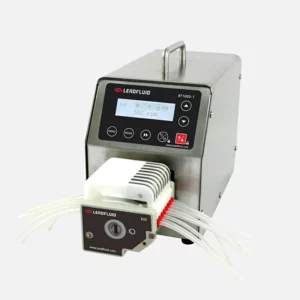The precision of syringe pumps can vary with different operating conditions and types of precision syringe pumps.
Several factors influence the precision of syringe pumps, including:
- Operating Conditions: Various operating conditions such as temperature, pressure, viscosity of the fluid being dispensed, and environmental factors can affect the precision of syringe pumps. Changes in these conditions may introduce variations in flow rate and volume dispensed, impacting overall precision.
- Syringe Size: The size of the syringe used in the syringe pump can influence precision. Smaller syringes typically offer higher precision compared to larger ones, as they require less force to operate and have smaller dead volumes. However, smaller syringes may have limitations in terms of maximum flow rate and volume capacity.
- Syringe Material: The material of the syringe barrel can affect precision. Glass syringes are often preferred for their low reactivity and minimal adsorption, which can improve precision, especially when dispensing small volumes of reactive or viscous fluids. However, plastic syringes are more commonly used due to their affordability and ease of disposal.
- Syringe Pump Type: Different types of syringe pumps, such as stepper motor-driven pumps, servo motor-driven pumps, and infusion/withdrawal pumps, may offer varying levels of precision. Stepper motor-driven pumps typically provide precise control over flow rates and volumes, with each step corresponding to a specific volume. Servo motor-driven pumps offer even higher precision, with continuous, smooth flow rate control. Infusion/withdrawal pumps are designed for dual-directional pumping and can achieve high precision in both infusion and withdrawal modes.
- Control Interface: The control interface of the syringe pump, including the user interface, software capabilities, and feedback mechanisms, can impact precision. Syringe pumps with intuitive user interfaces and advanced software features for programming flow profiles, setting flow rates, and monitoring performance in real-time can enhance precision and usability.
- Calibration and Maintenance: Regular calibration and maintenance of syringe pumps are essential for ensuring consistent and accurate performance over time. Calibration procedures help identify and correct any deviations from the desired flow rates and volumes, thereby maintaining precision.
- Fluid Characteristics: The characteristics of the fluid being dispensed, such as viscosity, density, and surface tension, can influence precision. Highly viscous or non-Newtonian fluids may require specialized syringe pump configurations or adjustments to achieve optimal precision.
Overall, the precision of syringe pumps depends on a combination of factors, including operating conditions, syringe size and material, pump type, control interface, calibration and maintenance practices, and fluid characteristics. By considering these factors and selecting the appropriate syringe pump configuration for specific applications, researchers can achieve high levels of precision in fluid dispensing and infusion tasks.
